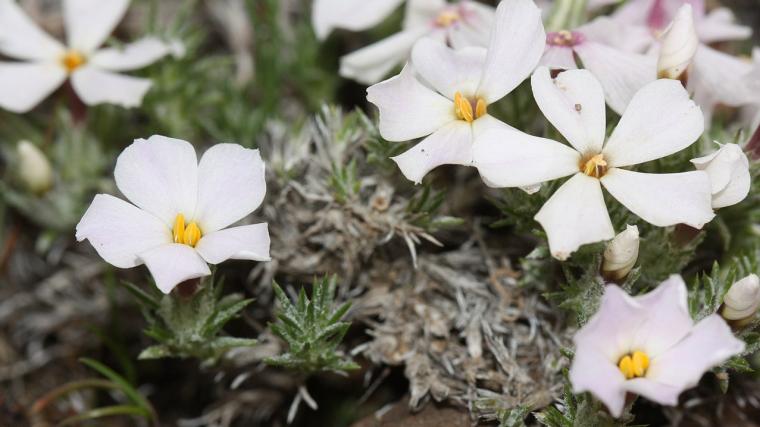
In a nutshell
Historical observations of phenology – typically collected with no intention of serving as the basis for scientific studies – are some of our best sources for understanding how phenology has changed in recent decades. A Wyoming-based research team recently digitized hand-written records of first flowering date collected in Grand Tetons National Park in the 1970s and 80s and collected observations from the same species in the same locations in recent years. Since the 1970s, flowering has advanced in many of the species sampled, and by as much as five weeks in hooded phlox (Phlox hoodii). Plants that flower earlier in the season showed greater advances and those that flower in late summer showed no changes in their flowering time since the 1970s. Differential changes in the timing of flowering has the potential to affect pollinators, which depend on flowering resources and greater sage-grouse, which rely heavily on early-season flowering plants and associated insects during their nesting and brooding seasons. Changing phenology could also negatively impact grizzly bears, which depend on berries for their fall diet.
What is special about this study?
While changes in phenology have been documented in many studies around the globe, the Greater Yellowstone Ecosystem, a region encompassing Yellowstone and Grand Tetons National Parks and surrounding public lands, has been relatively understudied when it comes to phenology. The authors’ findings provide important documentation of change – and the consequences of such change – in an understudied but important ecosystem.
What does this mean for YOU?
Historical records of phenology – jotted in notebooks or carefully tracked in diaries – are critically important data resources, serving as a baseline for comparing contemporary observations.
Citation: Bloom, T.D.S., D.S. O’Leary, and R. Corinna. 2022. Flowering time advances since the 1970s in a sagebrush steppe community: implications for management and restoration. Ecological Applications. https://doi.org/10.1002/eap.2583